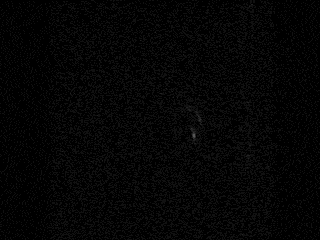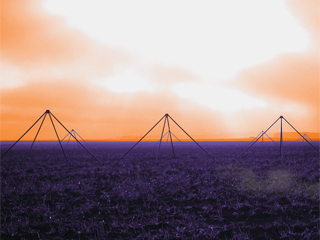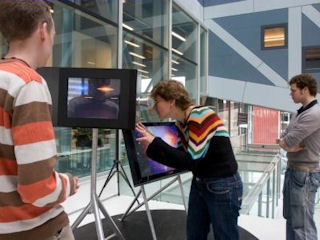Spot = star = radiation?
How do you research something that is infinitely huge, far out of reach, impossible to imitate in a lab, impossible to manipulate and – well – is really just completely unmanageable? Easy: you observe it. And if observation is the only tool available to you, you will of course ensure that you use as many observation techniques as possible.

Looking at the invisible universe
The universe; it’s as fascinating as it is unwieldy, and so astronomers spend their nights watching, peering, staring and gazing and their days measuring and calculating. Astronomers in Groningen who want to learn as much as possible about space not only observe with their bare eyes and optical telescopes. They observe light, but there’s more to light than meets the eye. They look beyond the visible part of the spectrum, to radio waves, X-rays, ultraviolet rays and infrared rays. They observe with many different kinds of ‘eyes’; from radio telescopes to space telescopes.

Research in Groningen
Astronomical research in Groningen takes place at the Kapteyn Institute (named after Jacobus Cornelius Kapteyn, the first professor of astronomy in Groningen). The Kapteyn Institute has been making an important contribution to national and international astronomical research since it was established. As well as research, for example on nearby star systems, interstellar matter and dark matter, the Kapteyn Institute also develops astronomical measuring instruments in collaboration with SRON. The institute is one of the driving forces behind LOFAR, the largest radio telescope in the world, situated near Groningen.

One object, multiple images
Thanks to the wide range of observation techniques, we are gaining an ever more complete picture of the ‘how & what’ of the universe. These observation techniques complement each other, occasionally to the great confusion of the observer. At the Science LinX exhibition you can see that different observation techniques in astronomy lead to the creation of very different images. This means it is often difficult to get a clear idea of the object under observation. Is a red nebula = a purple cloud = a blue spiral = a turquoise web?

Also useful for on Earth
The development and deployment of new measuring instruments is of crucial importance, not only to astronomy, but for all empirical science. New measuring methods allow new data to be collected, and new data in their turn form the basis for new scientific theories. In other words, the way you observe determines what you see and thus what you learn...
Links
- Hanny van Arkel, amateur astronomer, discovered an extraordinary object in space by accident!
- NASA (National Aeronautics and Space Administration)
- LOFAR (LOw Frequency ARray - l0w frequency telescope)
- NOVA (Netherlands Research School for Astronomy)
- ASTRON (Netherlands Foundation for Research in Astronomy)
- Kapteyn Astronomical Institute
Colophon
Special thanks to: Kapteyn Instituut, Prof. Peter Barthel, Prof. Thijs van der Hulst, Dr Gijs Verdoes Kleijn, Gergö Popping, Andrea Velicka, Corina van den Burgt, Nanja an Berkum, Renske de Jonge, Dr Michel Westenberg, Ingeborg Veldman, Frans van Hoesel and Laurens Voerman. Please contact Science LinX if you should have been included in the acknowledgements.
Author
Siëlle Gramser

| Last modified: | 10 March 2020 1.05 p.m. |

